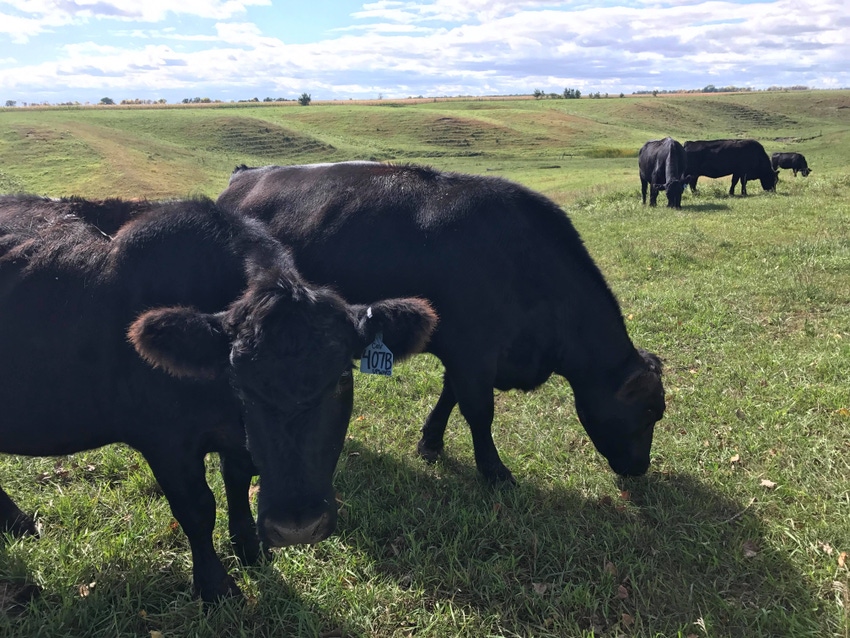Avoid overgrazing your pastures this fall
It may be tempting to use new green growth in pastures this fall to extend the grazing season and avoid feeding hay. However, that decision could come back to bite you come spring turnout.
October 17, 2018

It’s been a cool, wet fall in South Dakota. Through September and October, we’ve received an abundance of rain and even some early snow. And while the cooler temperatures should be putting pastures into dormancy, we’ve had just enough sunshine and warmer days to keep things looking green with some new growth showing in our grasslands.
Although we’ve weaned calves and have begun backgrounding them before sale day, the cow herd remains on the pastures as we try to extend the grazing season and attempt to maintain our stockpile of hay for the colder winter months.
Typically, our cattle would be on cornstalks already, but with all the rain, fields are too wet and muddy for combines. Fortunately, this week has proved to be a little warmer with no rainfall, so harvest is underway again with farmers making progress getting corn and beans out of the fields.
In fact, as I type this, combines are running in the cornfield adjacent to our home place, so hopefully, we’ll be able to move our cattle off grass and into that field to graze corn stalks by the weekend.
READ: Save hay by grazing crop residues this fall
For now, we continue to utilize our grass supply, which is a short-term solution that could prove to be a long-term problem come spring if we aren’t careful to maintain enough cover and new growth as the pastures go dormant.
Sean Kelly, South Dakota State University Extension range management specialist, warns producers that grazing these fresh green shoots of fall growth could be detrimental to our spring and summer forage supplies.
Kelly writes, “Regardless of where your ranch is located, a rancher must be very careful when grazing the fall green-up of cool season grasses.
“Cool season grasses have two growing seasons. They grow in the spring and early summer and then get another growth spurt in the fall.
READ: 4 tips for managing weeds this fall
“Extreme diligence must be taken not to overgraze during the fall green-up of cool season grasses. During the fall green-up, cool season grasses are storing their energy reserves to ensure health through the dormant season and vigor next spring when the growing season starts again.
“Tremendous damage to cool season grasses can happen if they are overgrazed during the fall green-up and they are unable to build those root reserves. The plant will have less vigor next spring and may die out completely during the dormant season.
“Native cool season grasses should not be grazed shorter than 6 inches in plant height. Also, by leaving sufficient plant height into the dormant season, the soil surface will be protected from erosion and snow capture during the winter is optimized.”
Read Kelly’s article, complete with graphs that show peak growing times for cool season grasses, by clicking here.
The opinions of Amanda Radke are not necessarily those of beefmagazine.com or Farm Progress.
About the Author(s)
You May Also Like





